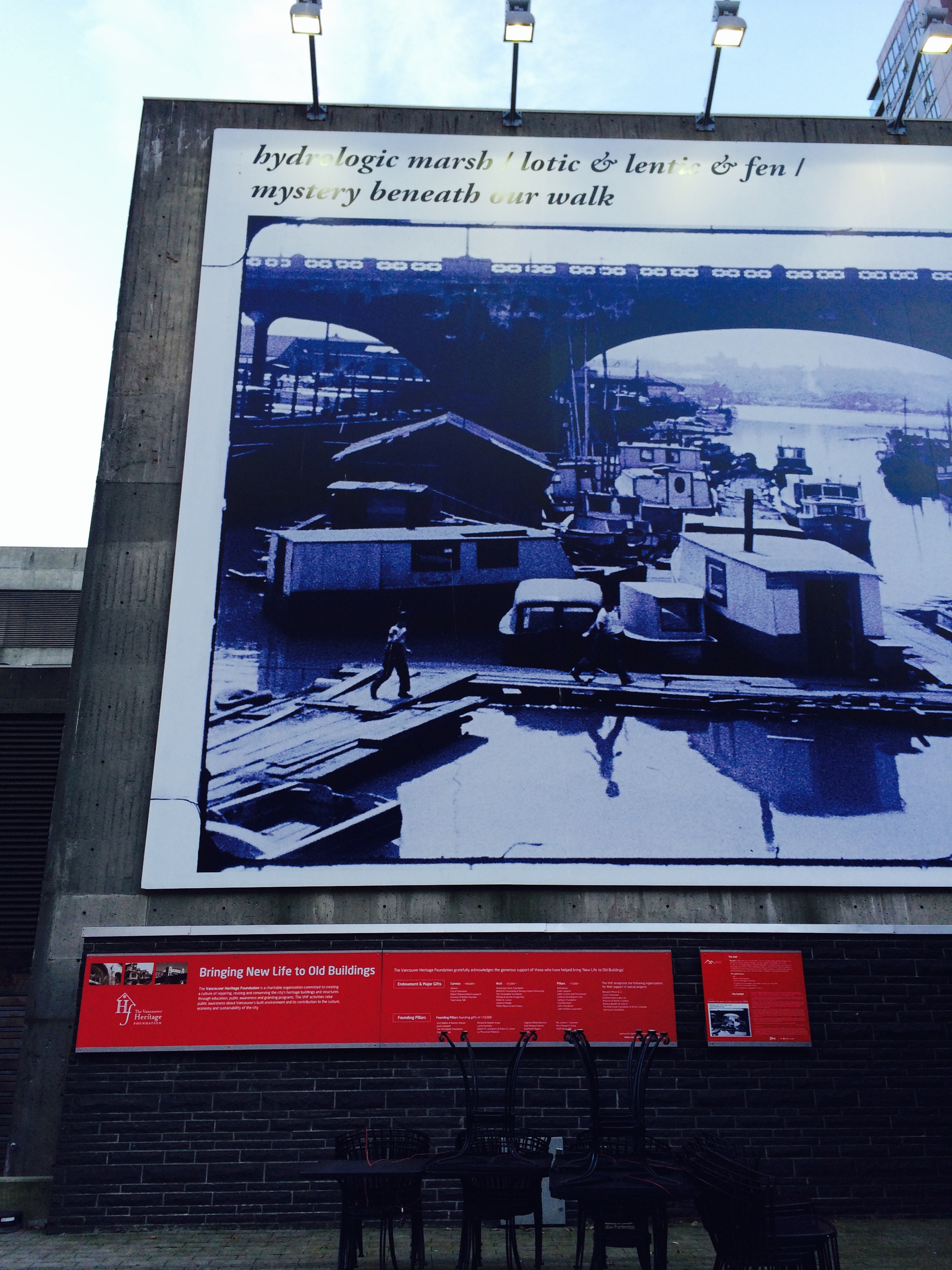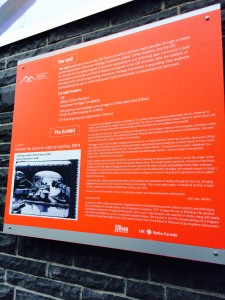History and Place in the Fountain: the source or origin of anything
If one were to stand on the corner of Hamilton and Georgia Street, they would see a large photographic image affixed to an exterior concrete wall of the CBC Vancouver Broadcast Centre Plaza. The image, extracted from CBC’s analogue media archives, is an enlarged film still from Summer Afternoon (1956). One half of a public art project called the Fountain: the source or origin of anything, the Wall is a photograph installation of two children walking across a dock in False Creek near the Old Georgia viaduct (Lo). Part outdoor photographic mural and part interactive web project, the Fountain, created by interdisciplinary artist Laiwen, explores history and ongoing movement within Vancouver’s urban environment.
The image fills the entire wall space of the CBC building, embedding itself in the building’s architecture to evoke the sense that it is perhaps rooted in Vancouver’s history as well. While large in size, the image comes across as unpretentious in its humble presentation, as it is the simplicity of the depicted image that speaks volumes. The vastness of the water as it recedes into the distance beneath the Old Georgia Viaduct situates the viewer in the photographed moment. As a result, the viewer is thus momentarily removed from the present and engulfed by the foreground of the composition in such a way that the image extends outwards onto Hamilton Street due to its sheer size. The graininess of the image does not subtract from the photograph’s purpose, but rather conjures a sort of wistfulness for a piece of history that no longer exists. Recalling the past through a capture single frame of history allows Laiwen to show how locations change across the fluidity of time.
Paired with the image is a poetic phrase Laiwen sources from the B.C Government’s ‘Glossary of Water Quality Terms’ that reads, “hydrologic marsh / lotic & lentic & fen / mystery beneath our walk.” Many of these words allude to the water in the image, which again calls to mind what once was, is no longer, since the Old Georgia Viaduct is now completely cemented over and “filled in as land” (Lo). The line “mystery beneath our walk” especially references this fact, as it prompts the viewer to reflect on the history of the land beneath their feet.
Overall, Laiwen seems to be particularly interested in the relationship between two concepts that are inexplicably linked: history and place. In the Fountain, Laiwen draws on archival evidence to take something that has been neglected and present it in a way that makes it more relevant to the present. Consequently, the installation asks the viewer to ruminate on the existing urban places in the Vancouver landscape and how they might have been constructed or deconstructed over time.
For instance, Laiwen appears to juxtapose the image itself against the backdrop of its surroundings; the barren skyline within the Fountain’s image can be contrasted against the towering buildings that surround the CBC plaza. This juxtaposition allows the viewer to consider the rapid expansion of Vancouver as a metropolitan city and the effect community planning has on local places.
Works Cited
Lo, Joni. “Curatorial Essay”, Laiwanette., n.d. Web. 10 Mar. 2015

